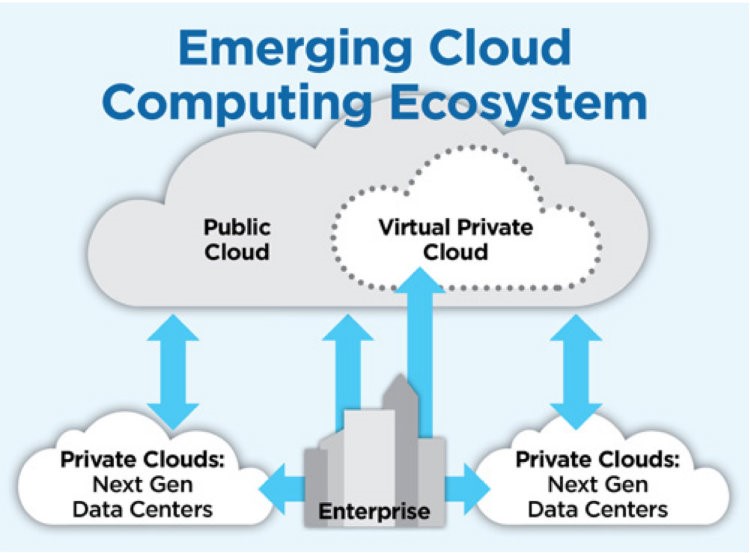Smart cloud consumers must consider a number of factors when calculating the total cost of ownership (TCO) of their environment. Here is how to cut through the complexity.
Historically, private clouds have been labeled as the premium choice. An enterprise grade solution for mission-critical applications that comes at a premium price. Total control, data protection, and performance are commonly cited as the best arguments for selecting private cloud versus public cloud.
When considering total cost of ownership, some users are quick to believe that public clouds are more affordable than their private counterparts. However, there is a tipping point where a private cloud solution can be a less expensive option for enterprises. In addition, a private cloud offers benefits that add value to a business’s operations.
Benefits of Private Cloud
In fact, a 451 Research study conducted earlier this year with 150 IT decision makers revealed that 41% of organizations were operating their VMware private clouds at lower unit costs versus public cloud. Another HPE report claimed that 40% of organizations were operating at a lower cost within the private cloud using OpenStack.
“If your organization is focused on efficiency, then private cloud might be the lower TCO option. Centralized applications, just-in-time hardware provisioning and prioritized workloads can drive high utilization, while automation, homogeneous workloads and outsourcing can drive labor efficiencies,” says Own Rogers, a research director for 451 Research.
It is important to prioritize your current needs, and also how your business will change in terms of labor efficiencies and resource usage

Image Source: “Cloud Computing” at Datamation
Measuring Total Cost Ownership
While it is important to quantify the resources, assets, and utility charges it takes to run their cloud environment, many organizations do not. Measuring resource consumption specific to an application or service requires cross-departmental coordination.
If it is possible, an organization should track factors such as utilities, bandwidth, storage, software licenses, human labor, support costs, maintenance, auditing and compliance, and downtime or outages. As you can see, getting an accurate measurement on the total cost of ownership per application can become very complex.
If a business were to outsource some of their staff, or purchase new tools for automation and self-service, how would that affect their overall costs? If your organization is not already, measure your estimated cloud usage versus actual usage. Cloud waste could make the difference between using one model over another. Now let us dig into other financial considerations.
Financial Breakdown
When investing in infrastructure, businesses get a combination of resources in the form of CPU, memory, storage, and IOPS. Infrastructure from a public cloud comes in predefined bundles in what are known as flavors. An application must fit those flavors and choosing the one that is least restrictive is best practice.
The spare or unused resources in these categories go back into the shared pool of resources and are consumed by your team or another company. You are paying to reserve resources, not for what you use. The term pay-per-use if often used to describe public cloud models, but that does not quite illustrate how the financial model works.
A Public cloud environment requires careful management. It is not unusual for cloud users to forget to shut down VMs, especially as projects build up and work becomes chaotic, but these VMs continue to accrue costs. A company can either use third-party tools to help control costs and cloud resource waste or create internal processes and reporting measures. Both require time or additional money.
When it comes to private cloud, there are several options available. You can pay a fixed monthly price for a dedicated private cloud that only your company has access to, or you can use a pay-as-you-go virtual private cloud that offers you a logically isolated environment. In a managed environment, you can offload the burden of managing and optimizing your cloud environment and gain some value-added services.
Understanding Workloads
There are four basic types of workloads: linear, seasonal, stable, and unpredictable. The larger the number of virtual machines running, the more predictable a workload is. This is consistent with the probability theory, the law of large numbers. The consensus among consumption studies concludes that stable, flat workloads are cheaper on a private cloud over a fixed term, while variable workloads are likely to reduce costs if in a public cloud or on-demand cloud model.
According to a 451 Research survey for 2018 IT planning, both public and private cloud growth will continue next year, with 14.8% of enterprises stating they plan to grow their private clouds, compared to the 7.2% who plan to expand their public cloud.
Other Cloud Drivers
Cost is not the only driving force behind adopting one cloud model over another. For some, the assurance of having dedicated infrastructure for a company is worth it.
Data protection, security and compliance, control, customization, as well as integration with business processes are of equal or higher importance than price for some cloud adopters. Those industries subject to HIPAA or PCI laws have to keep security and compliance as a top priority, they do not have a choice. Plus, the cost of non-compliance far exceeds the price of maintaining a compliant cloud, as the average consolidated cost of a data breach is now $3.62 million, according to a recent IBM Security Report.
For other cloud users, there is a fine line between cloud models: A 2017 research study conducted by VMware earlier this year measured the exact tipping point at which organizations would switch from private to public based on price. The majority of respondents said they would consider migrating approximately 25% of their workloads at a 10% price decrease.
Who Should Use a Private Cloud Solution?
Once a company has determined that moving to the cloud is their next step, they can determine if the private cloud provides the right IT environment for them by evaluating a couple of things.
For highly regulated industries, the private cloud could be the only realistic option to ensure regulatory compliance. For example, HIPAA requires that electronic protected health information is created, received, stored, and transmitted in a way that ensure its confidentiality, integrity, and availability.
In addition to highly regulated industries that are governed by compliance regulations, the private cloud should be considered by organizations that require flexibility or a virtualized environment. Many medium to large sized businesses runs their applications that each reside on its own hardware. A virtualized server that runs those applications allows the organization to scale the resources available to it.
This will help to improve productivity, as servers running more resource-intense applications are equip with more power and memory. It also lowers the cost, as the increased resources are drawn from underused servers, rather than purchased separately.
Find the Right Private Cloud Solution with LightEdge
A Voice of The Enterprise (VotE) Organizational Dynamics 2017 report that 34 percent of 259 IT decision-makers surveyed migrated data from public to private cloud in the past 12 months. So, what does all this evidence suggest? Your organization must develop a strategy that addresses your unique needs. There is no such thing as one-size-fits all for cloud strategy, and you should not rely on what others are doing to guide you.
Your cloud budget is based on assumptions of estimated usage and labor efficiency. Shifting demands often make it difficult for your businesses to anticipate true cloud costs, but using our tips, you can make an educated guess.
While the lower initial costs of public cloud hosting might seem like a compelling reason to choose a public cloud solution, if you have regulatory, security, and/or performance concerns, private hosting may be a better choice and allow you to remain both cost-effective and secure.
LightEdge’s Dedicated Private Cloud is right for you if:
- You have high performance and/or robust workload objectives
- You want to avoid CapEx spending for next equipment lifecycle
- You need to move skilled IT staff away from worrying about hardware
- You need to need meet strict compliance and security standards, such as HIPAA or PCI-DSS
LightEdge’s Virtual Private Cloud is right for you if:
- You need compute/storage resources QUICKLY or for a short amount of time
- You don’t have staff to maintain your own Dedicated Private Cloud
- You require resources close to traditional IT but don’t have enough need to justify a large investment
- You need a cloud option that can be used for business continuity and disaster recovery
With over 20 years in business, LightEdge offers a full stack of best-in-class IT services to provide flexibility, security, and control for any stage of a customers’ technology roadmap. Our solutions include premier colocation across seven purpose-built data centers, industry-leading private Infrastructure as a Service (IaaS) and cloud platforms, and the top global security and compliance measures.
Our owned and operated facilities, integrated disaster recovery solutions, and premium cloud choices make up a true Hybrid Solution Center model. With our recent acquisition of OnRamp, LightEdge’s highly-interconnected data center facilities now span Des Moines, IA, Kansas City, MO, Omaha, NE, Austin, TX and Raleigh, NC.
LightEdge cloud experts can help you evaluate options and find the best fit for your company. Contact us today.




